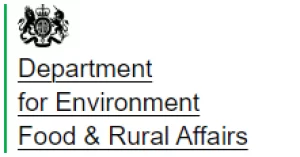The size and shape of the farmsteads of the Solway Coast National Landscape is wide and varied.
They range from substantial farmhouses and longhouses owned by the bigger landowners, to small cottages built to house their workforce.
The materials used vary greatly too – from the local red sandstone or brick to slate from Wales or Buttermere in Cumbria, as well as cobbles, rubble and limestone which are rendered, and not forgetting the very traditional clay dabbin structures. Some of the buildings have even reused stone from Roman times which was used to create Hadrian’s Wall and other fortifications.
The roofs of the oldest buildings are usually covered in slate or sandstone, with some limited examples of reed and heather thatch.
Some were built with space for animals to live indoors, while others were primarily for human use.
The monks of Holme Cultram Abbey were the first to farm the Solway Plain seriously. Once the abbey was dissolved in 1538, tenant farmers began to create their own farmsteads. The oldest farmhouses are the longhouses – a home with an adjacent byre separated by a passageway.
The layouts vary enormously. Some farmsteads were arranged around a courtyard, others were simply a collection of buildings – the style was influenced by the available money or space, or the type of agricultural industry.
Arable farms needed barns and granaries, those with animals needed accommodation for them.
In 2016, a major project was carried out by the Solway Wetlands Landscape Partnership, funded by the Heritage Lottery Fund, to survey the farms of the Solway Plain. Volunteers visited more than 400 sites to discover how many buildings were still in use or had been converted. The focus was on the farm buildings, like barns, byres and gin cases – the latter are buildings where horses powered an engine..
The project’s aim is offer continuing professional development opportunities for planning professionals as it will flag up principles of building conversion, and inform on how to deal with key sites and ensure they are not lost.
Of 208 farms surveyed, 81 were considered to have significant architectural and historic interest – and 17 of those were said to be exceptional. Six of those ‘exceptional’ finds were considered to be at risk.
The Solway Coast National Landscape team continues to work with its partners and landowners and tenants to ensure the farmstead architecture of the Solway Plain is protected and loved.

